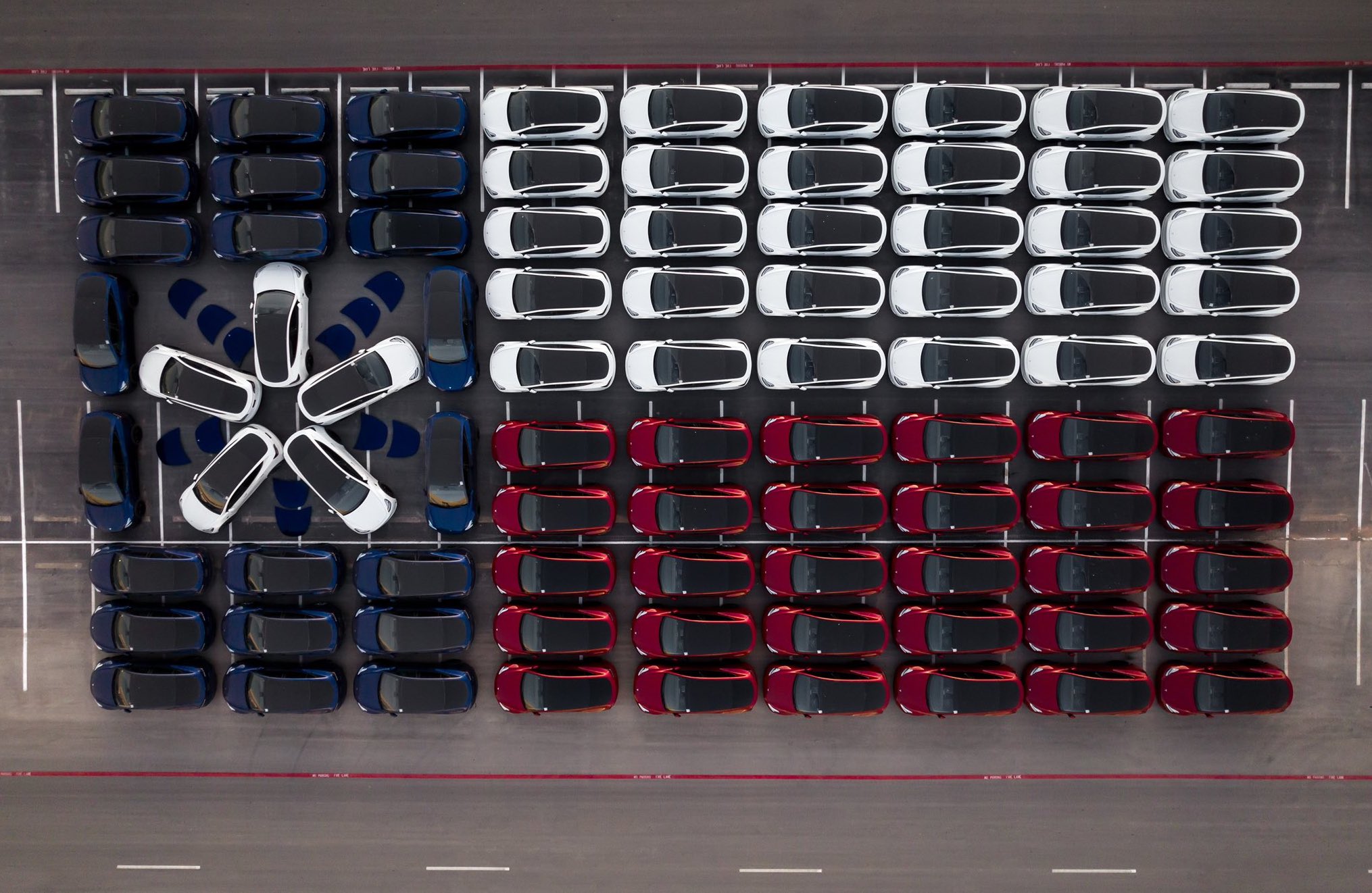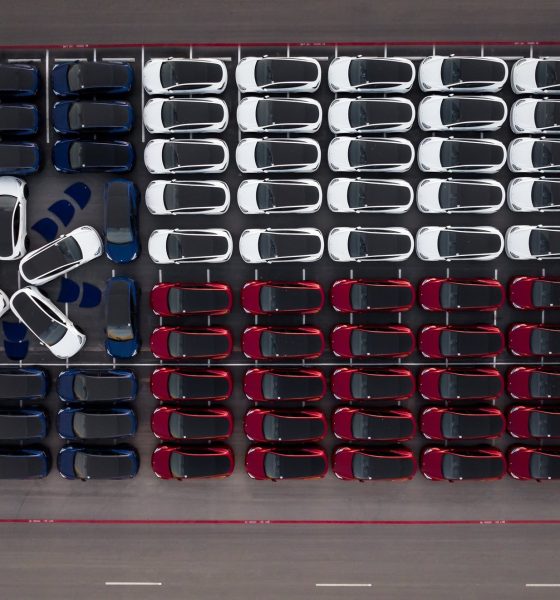Tesla may consider Texas as its new home after establishing a Gigafactory in the state, but the EV maker is still getting the cold shoulder from the local auto market. Just recently, for example, Texas released a list of electric and electrified vehicles that are eligible for its Light-Duty Motor Vehicle Purchase or Lease Program. No Teslas were included in the list.
The program offers rebates of up to $2,500 for the purchase or lease of specific electric and electrified vehicles. The list of eligible cars is extensive, comprising 142 different models from practically every major automaker. These include 22 BMW models, 17 models from Porsche, 15 from Audi, 6 from Mercedes-Benz, and 14 cars from Ford. Even Bentley had two models that were included in the list.
What was absent in the eligible vehicles list was every Tesla offered today. Tesla, the Austin-based EV maker that’s poised to provide at least 20,000 direct jobs and 100,000 indirect jobs over time in the state thanks to Gigafactory Texas, was deemed ineligible for the state’s EV credit. The reason for this seems to be something that Tesla has been dealing with since its earliest days—auto dealerships.
Laura Lopez, a media and community relations manager for the Texas Commission on Environmental Quality, which runs the rebate program, explained Tesla’s absence in a statement.
“The program currently requires that eligible vehicles must be purchased or leased from a licensed new vehicle dealer or leasing company in Texas. Under Texas law, vehicles purchased directly from the manufacturer or an out-of-state dealer not licensed to sell or lease new vehicles in Texas are not eligible for a rebate,” she said, according to The Center Square.
Texas law currently prevents Tesla and other automakers from selling vehicles directly to consumers. Despite notable support from car buyers, dealers in states like Texas insist that the use of franchised dealers is still the optimal way to purchase vehicles. The Texas Automobile Dealers Association has also maintained that the state’s law preventing direct sales is a way to protect competition.
“Texas franchised dealer laws protect competition and provide the most efficient and effective delivery model for new and used car sales in Texas. The current system works well for Texas and Texans,” Jennifer Stevens, a spokesperson for the Texas Automobile Dealers Association, said.
If Texas does not change its laws, Tesla would have to ship its Made-in-Texas vehicles out of state first before delivering them to Texas buyers. This setup is ridiculous, and it is one that is being challenged even by numerous entities, including politicians in the state. State Rep. Cody Harris, a Republican representing District 8, introduced a bill in 2021 that aimed to acquire exceptions to Texas’ dealer franchise law, but his efforts were unsuccessful.
Nevertheless, Harris noted that he believes Tesla would thrive regardless of what happens. “As markets and technologies change, we want to be the go-to state for businesses who are being crushed by burdensome regulation in other parts of the country, which is why Tesla chose to move here from California,” he noted.
Carla Bailo, the president and CEO of the Center for Automotive Research in Michigan, is on the same page. “It certainly hasn’t slowed down Tesla’s sales – they are still selling in all these places they don’t have dealerships – and a lot more companies are starting to go that way because the consumer really likes it. (Dealership laws) are protecting something that might be going by the wayside in any case. The dealer, unfortunately, hasn’t always been a pleasant experience for a lot of people,” she said.
Below are the vehciles that qualify for Texas’ Light-Duty Motor Vehicle Purchase or Lease Program.
Don’t hesitate to contact us with news tips. Just send a message to simon@teslarati.com to give us a heads up.

News
Tesla FSD fleet is nearing 7 billion total miles, including 2.5 billion city miles
As can be seen on Tesla’s official FSD webpage, vehicles equipped with the system have now navigated over 6.99 billion miles.

Tesla’s Full Self-Driving (Supervised) fleet is closing in on almost 7 billion total miles driven, as per data posted by the company on its official FSD webpage.
These figures hint at the massive scale of data fueling Tesla’s rapid FSD improvements, which have been quite notable as of late.
FSD mileage milestones
As can be seen on Tesla’s official FSD webpage, vehicles equipped with the system have now navigated over 6.99 billion miles. Tesla owner and avid FSD tester Whole Mars Catalog also shared a screenshot indicating that from the nearly 7 billion miles traveled by the FSD fleet, more than 2.5 billion miles were driven inside cities.
City miles are particularly valuable for complex urban scenarios like unprotected turns, pedestrian interactions, and traffic lights. This is also the difference-maker for FSD, as only complex solutions, such as Waymo’s self-driving taxis, operate similarly on inner-city streets. And even then, incidents such as the San Francisco blackouts have proven challenging for sensor-rich vehicles like Waymos.
Tesla’s data edge
Tesla has a number of advantages in the autonomous vehicle sector, one of which is the size of its fleet and the number of vehicles training FSD on real-world roads. Tesla’s nearly 7 billion FSD miles then allow the company to roll out updates that make its vehicles behave like they are being driven by experienced drivers, even if they are operating on their own.
So notable are Tesla’s improvements to FSD that NVIDIA Director of Robotics Jim Fan, after experiencing FSD v14, noted that the system is the first AI that passes what he described as a “Physical Turing Test.”
“Despite knowing exactly how robot learning works, I still find it magical watching the steering wheel turn by itself. First it feels surreal, next it becomes routine. Then, like the smartphone, taking it away actively hurts. This is how humanity gets rewired and glued to god-like technologies,” Fan wrote in a post on X.
News
Tesla starts showing how FSD will change lives in Europe
Local officials tested the system on narrow country roads and were impressed by FSD’s smooth, human-like driving, with some calling the service a game-changer for everyday life in areas that are far from urban centers.

Tesla has launched Europe’s first public shuttle service using Full Self-Driving (Supervised) in the rural Eifelkreis Bitburg-Prüm region of Germany, demonstrating how the technology can restore independence and mobility for people who struggle with limited transport options.
Local officials tested the system on narrow country roads and were impressed by FSD’s smooth, human-like driving, with some calling the service a game-changer for everyday life in areas that are far from urban centers.
Officials see real impact on rural residents
Arzfeld Mayor Johannes Kuhl and District Administrator Andreas Kruppert personally tested the Tesla shuttle service. This allowed them to see just how well FSD navigated winding lanes and rural roads confidently. Kruppert said, “Autonomous driving sounds like science fiction to many, but we simply see here that it works totally well in rural regions too.” Kuhl, for his part, also noted that FSD “feels like a very experienced driver.”
The pilot complements the area’s “Citizen Bus” program, which provides on-demand rides for elderly residents who can no longer drive themselves. Tesla Europe shared a video of a demonstration of the service, highlighting how FSD gives people their freedom back, even in places where public transport is not as prevalent.
What the Ministry for Economic Affairs and Transport says
Rhineland-Palatinate’s Minister Daniela Schmitt supported the project, praising the collaboration that made this “first of its kind in Europe” possible. As per the ministry, the rural rollout for the service shows FSD’s potential beyond major cities, and it delivers tangible benefits like grocery runs, doctor visits, and social connections for isolated residents.
“Reliable and flexible mobility is especially vital in rural areas. With the launch of a shuttle service using self-driving vehicles (FSD supervised) by Tesla in the Eifelkreis Bitburg-Prüm, an innovative pilot project is now getting underway that complements local community bus services. It is the first project of its kind in Europe.
“The result is a real gain for rural mobility: greater accessibility, more flexibility and tangible benefits for everyday life. A strong signal for innovation, cooperation and future-oriented mobility beyond urban centers,” the ministry wrote in a LinkedIn post.
News
Tesla China quietly posts Robotaxi-related job listing
Tesla China is currently seeking a Low Voltage Electrical Engineer to work on circuit board design for the company’s autonomous vehicles.

Tesla has posted a new job listing in Shanghai explicitly tied to its Robotaxi program, fueling speculation that the company is preparing to launch its dedicated autonomous ride-hailing service in China.
As noted in the listing, Tesla China is currently seeking a Low Voltage Electrical Engineer to work on circuit board design for the company’s autonomous vehicles.
Robotaxi-specific role
The listing, which was shared on social media platform X by industry watcher @tslaming, suggested that Tesla China is looking to fill the role urgently. The job listing itself specifically mentions that the person hired for the role will be working on the Low Voltage Hardware team, which would design the circuit boards that would serve as the nervous system of the Robotaxi.
Key tasks for the role, as indicated in the job listing, include collaboration with PCB layout, firmware, mechanical, program management, and validation teams, among other responsibilities. The role is based in Shanghai.
China Robotaxi launch
China represents a massive potential market for robotaxis, with its dense urban centers and supportive policies in select cities. Tesla has limited permission to roll out FSD in the country, though despite this, its vehicles have been hailed as among the best in the market when it comes to autonomous features. So far, at least, it appears that China supports Tesla’s FSD and Robotaxi rollout.
This was hinted at in November, when Tesla brought the Cybercab to the 8th China International Import Expo (CIIE) in Shanghai, marking the first time that the autonomous two-seater was brought to the Asia-Pacific region. The vehicle, despite not having a release date in China, received a significant amount of interest among the event’s attendees.










